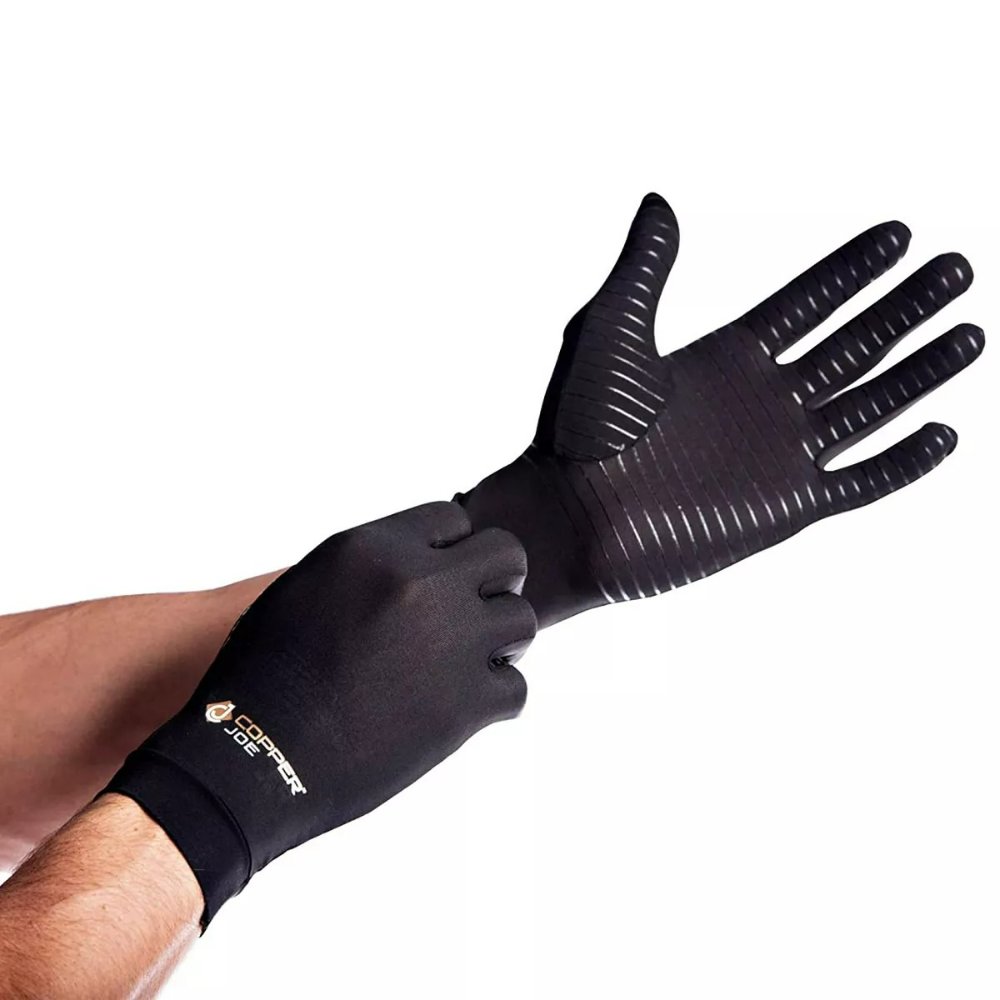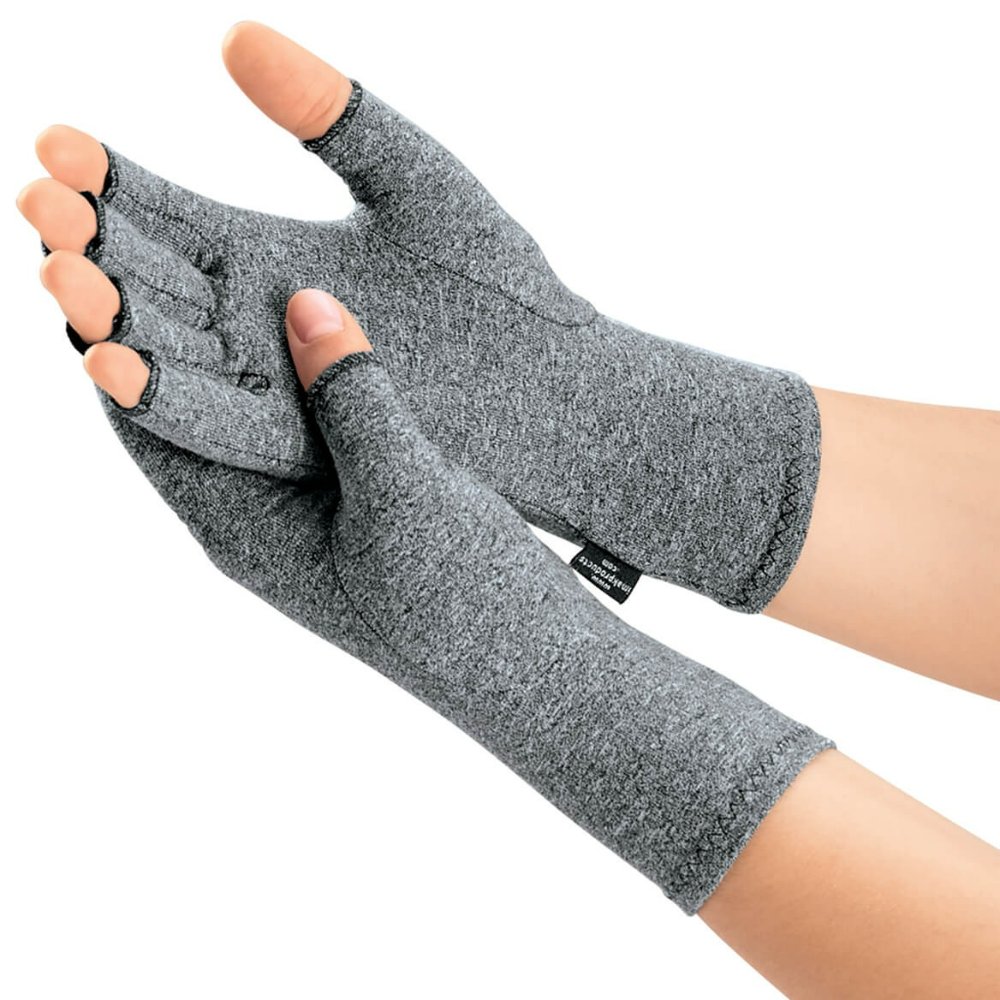What are Hand Compression Gloves?
Hand compression gloves are designed to provide support and relief for the hands. These snug-fitting gloves apply gentle pressure to the hand and fingers. They aim to reduce pain, improve circulation, and promote healing. Often, they are used by people with arthritis or other conditions that cause hand pain and stiffness.
Types of Hand Compression Gloves
There are various types of compression gloves available in the market. Some cover the entire hand and fingers, while others leave the fingertips exposed. This can offer better grip and tactile sensation. Copper-infused gloves are a popular option. They are believed to reduce inflammation and offer additional pain relief. Thermal gloves use heat therapy to help soothe aching hands.
Materials Used in Hand Compression Gloves
Hand compression gloves are made from different materials. The most common include a blend of cotton, spandex, and nylon. This combination provides both comfort and compression. Some gloves have silicone patterns on the palms and fingers. This helps to improve grip. Neoprene is another popular material due to its durability and elastic properties.

Benefits of Using Hand Compression Gloves
The regular use of compression gloves can provide several health benefits. They not only assist in managing symptoms but also support overall hand health.
Pain Relief and Improved Circulation
One of the main benefits of hand compression gloves is their ability to alleviate pain. By applying consistent pressure, these gloves help reduce discomfort caused by various conditions. This pressure promotes blood flow which can reduce swelling and improve healing times. Many users find that with improved circulation, they experience less pain and quicker recovery from injuries.
Improved circulation also helps in flushing out toxins and inflammatory substances. This can be particularly beneficial for arthritis patients. When hands are less inflamed, movements become easier and less painful. The consistent use of these gloves, especially during active periods, can make daily tasks more manageable.
Support and Stabilization for Joints
Hand compression gloves provide crucial support to the joints in the hands. This can prevent strain and overuse injuries. The compression offers a kind of ‘hug’ to the muscles and joints. This ‘hug’ helps to keep them aligned and reduces the risk of joint-related discomfort.
For people with weak or unstable joints, the stabilization offered by compression gloves is vital. It enables them to engage in their regular activities with more confidence. By ensuring joint stability, the gloves help reduce the likelihood of further damage. This support is beneficial not only to arthritis patients but also to athletes and individuals who engage in repetitive hand movements.
Who Should Use Hand Compression Gloves?
Hand compression gloves are beneficial for various individuals. They support hand health and manage symptoms related to pain and stiffness.
Arthritis Patients
Arthritis causes hand pain, stiffness, and swelling. Wearing compression gloves regularly can ease these symptoms. The gloves apply gentle pressure, which boosts circulation and reduces inflammation.
Athletes and Active Individuals
Athletes and active individuals often strain their hands during activities. Hand compression gloves provide the necessary support and stabilization. This reduces the risk of injuries and aids in quicker recovery from strenuous exercises.
Office Workers and Gamers
Many office workers and gamers experience hand fatigue and discomfort from continuous computer use. Hand compression gloves can lessen this discomfort. They help maintain proper hand posture and circulation, which is crucial during long periods of repetitive motion.

How to Choose the Right Hand Compression Gloves
Choosing the right hand compression gloves is essential for them to be effective. Here are some aspects to consider.
Sizing and Fit
To get the most out of compression gloves, proper sizing is crucial. Ill-fitting gloves can either be too tight, cutting off circulation, or too loose, providing insufficient compression. Most manufacturers offer a size chart which you can reference using the measurements of your hand. Measure the width of your palm and the length of your fingers to determine the perfect fit. Remember, the gloves should feel snug but not restrict blood flow.
Features to Consider
When selecting hand compression gloves, pay attention to certain features:
- Material: Look for breathable and moisture-wicking fabrics to keep hands dry and comfortable.
- Finger Design: Decide between full-fingered gloves for more warmth or fingerless for better dexterity.
- Compression Level: Ensure the gloves have the right amount of compression for your specific needs.
- Grip: If you need to handle objects, search for gloves with a non-slip grip.
- Copper-Infusion: Some believe that copper-infused gloves add pain-relief benefits, though these claims are not universally accepted.
- Ease of Cleaning: Gloves that are machine-washable save time and maintain hygiene.
Take the time to research and compare different hand compression gloves, focusing on these features. This will help you find the best pair for your individual requirements and ensure maximum benefits from their use.
How to Use Hand Compression Gloves Effectively
Proper usage of hand compression gloves maximizes their benefits. Here’s how to use them effectively.
Best Practices for Wearing
- Wear Them Consistently: For the best results, wear hand compression gloves regularly. Consistency is key, especially for chronic issues like arthritis.
- Right Timing: Use the gloves during periods of intense activity or when experiencing high pain levels.
- Correct Placement: Make sure the gloves fit snugly and cover the necessary areas. They should not bunch up or slide down.
- Combine with Other Treatments: While effective on their own, hand compression gloves work best when used in conjunction with other therapy methods, such as physical therapy or medication.
Maintenance and Care
- Regular Washing: Keep the gloves clean to prevent skin irritation. Follow care labels for washing instructions.
- Inspect Regularly: Check for tears or wear. Replace gloves if they lose elasticity or have visible damage.
- Dry Properly: After washing, air dry the gloves to maintain their shape and elasticity. Avoid direct heat sources like radiators.
- Store Correctly: Keep gloves flat or rolled in a cool, dry place to avoid creases and maintain form.
By following these guidelines, you can ensure that your hand compression gloves remain effective and durable.

Common Questions About Hand Compression Gloves
When discussing hand compression gloves, several questions frequently arise. We will address two common concerns: their effectiveness in treating symptoms and potential side effects.
Effectiveness in Treating Symptoms
Many users report significant symptom relief when using hand compression gloves. These gloves can:
- Reduce pain from conditions like arthritis.
- Decrease stiffness and increase flexibility.
- Improve circulation, leading to reduced swelling.
However, effectiveness may vary from person to person. It’s also important to note that while gloves can alleviate symptoms, they do not cure underlying conditions. Consistent wear and correct sizing greatly impact their efficacy. Users should combine glove use with other treatments for best outcomes.
Potential Side Effects
Hand compression gloves are generally safe, but they can cause side effects if not used properly. Potential issues include:
- Skin irritation from improper glove material.
- Circulation being cut off if gloves are too tight.
- Discomfort or increased pain if sizing is incorrect.
To avoid these issues, choose the right size and material for your hands. If you experience any side effects, consult a healthcare professional. Remember, hand compression gloves should provide relief, not additional discomfort.
Comparing Hand Compression Gloves with Other Hand Relief Methods
Comparing hand compression gloves with other methods can help assess their value and effectiveness.
Medication and Therapy
Many people use medications and therapy to relieve hand pain. Medications often include pain relievers and anti-inflammatory drugs. These can quickly reduce pain and swelling. However, they may have side effects and do not offer physical support.
Therapy might involve exercises and treatments from professionals. This can improve flexibility and strength. Yet, it requires ongoing commitment and might be costly.
Alternative Support Devices
Other devices like wrist splints or ergonomic tools are available too. Wrist splints stabilize the hand and reduce strain. They are useful for certain conditions, but may limit hand movement more than hand compression gloves.
Ergonomic devices, such as keyboard pads and customized mouse gadgets, reduce strain during prolonged computer use. These devices help with posture and alignment but do not compress or directly support circulation like hand compression gloves.
These alternatives have their benefits, but compression gloves offer a unique combination of support, mobility, and pain relief. Users should consider their specific needs and preferences when choosing among these options.